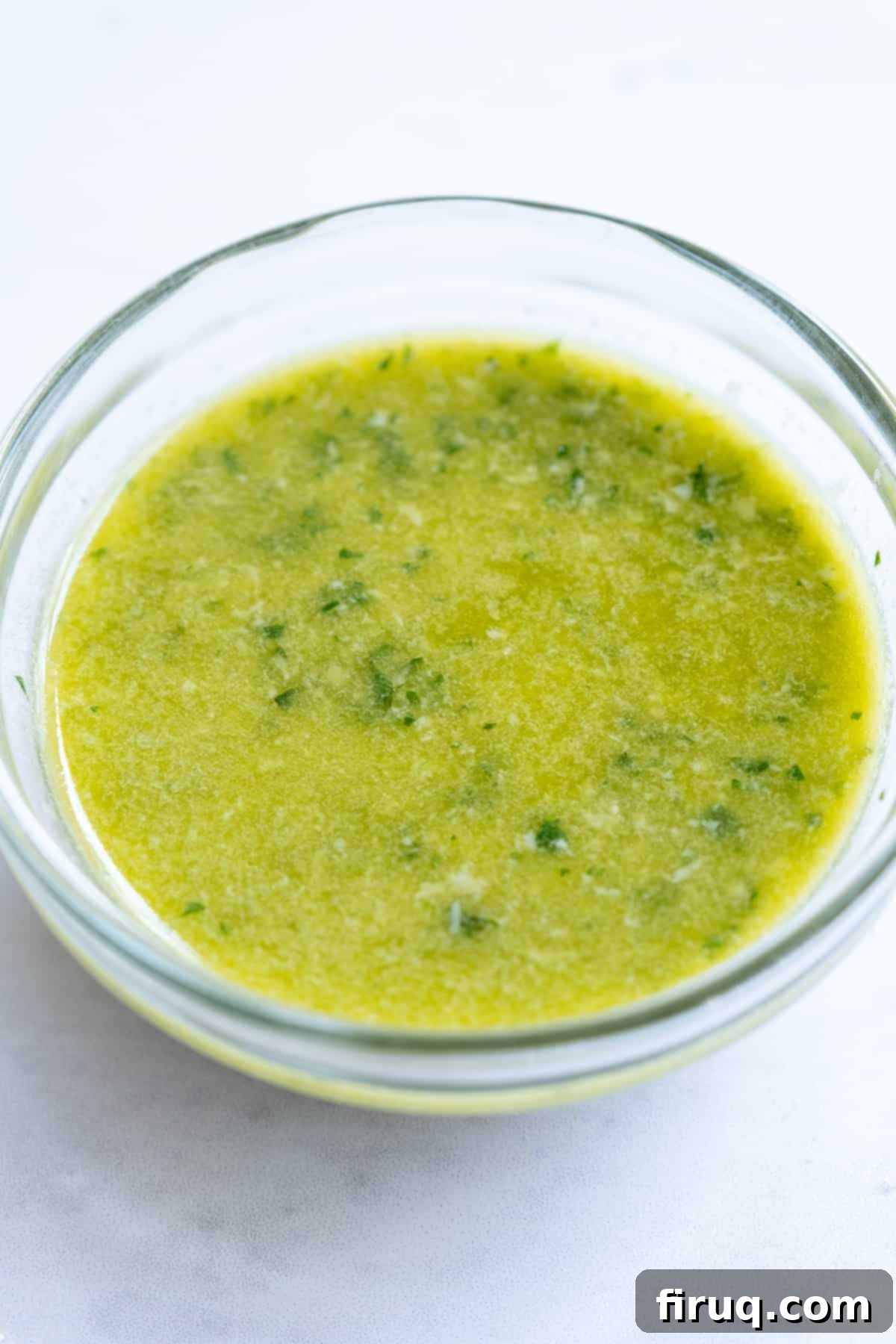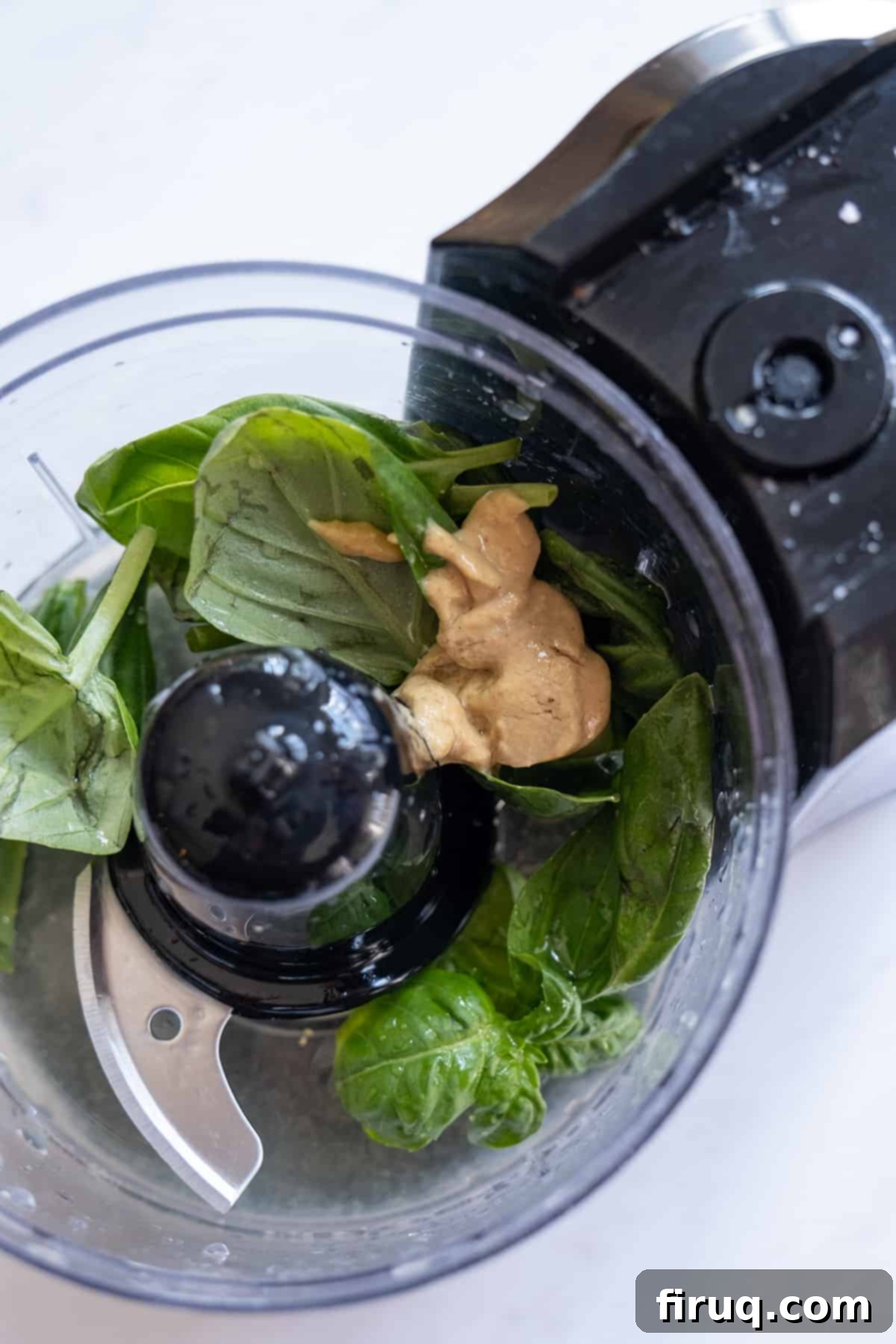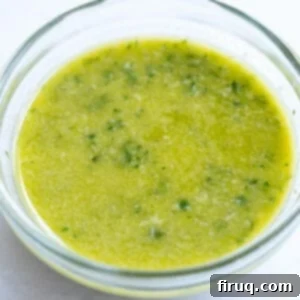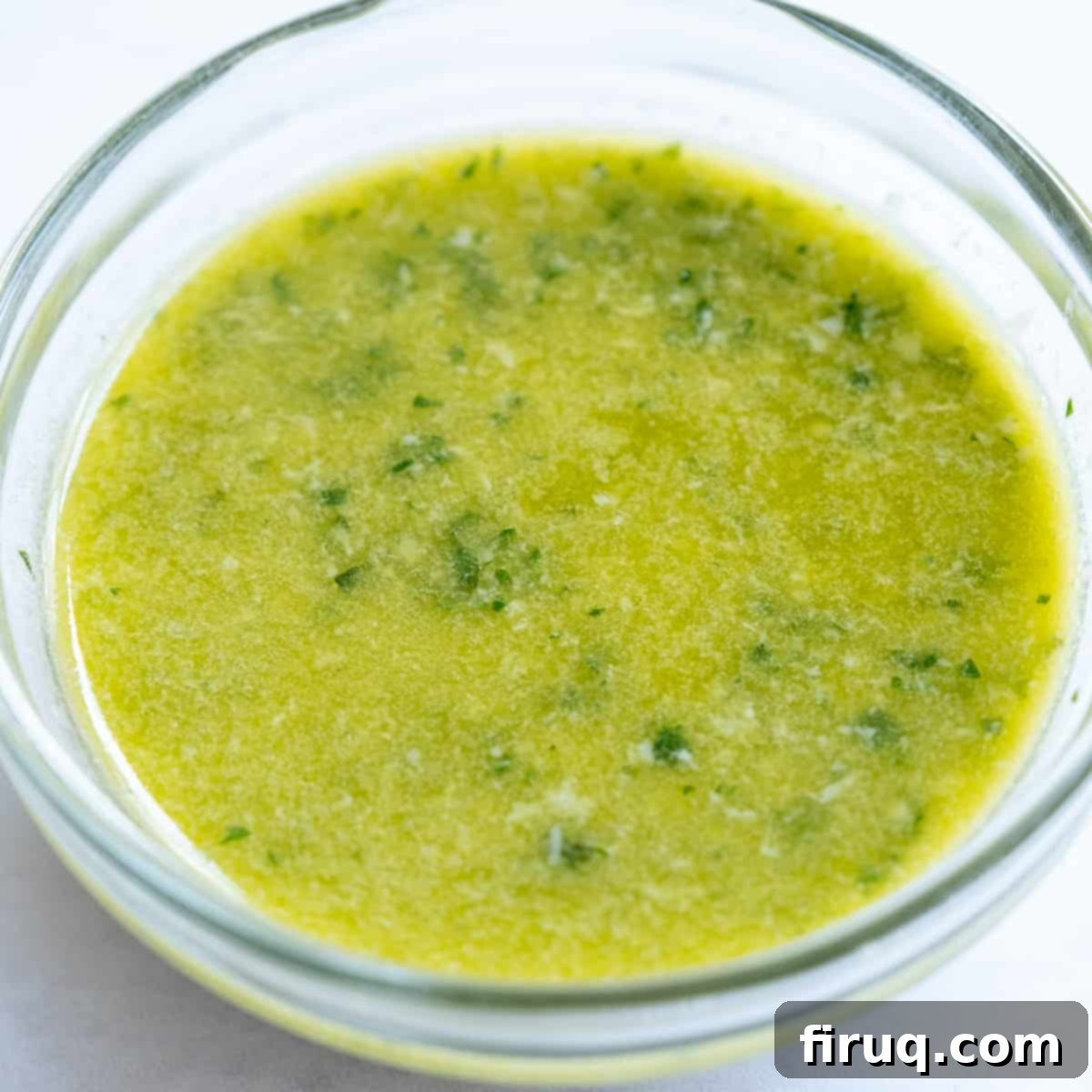Bright & Zesty Homemade Lemon Basil Vinaigrette: Elevate Your Meals with a Burst of Fresh Flavor
Discover the secret to elevating everyday meals with this incredibly easy and utterly delicious Lemon Basil Vinaigrette. Perfect for drenching your favorite salads, adding a vibrant kick to sandwiches and wraps, or even marinating proteins, this homemade dressing is a true game-changer. Its bright, crisp, and refreshing profile makes it the quintessential dressing for any summer gathering, but its delightful flavors can truly brighten your palate any time of the year. Forget store-bought alternatives; once you try this fresh, zesty concoction, you’ll never go back!

This versatile vinaigrette pairs exceptionally well with a variety of dishes. Try it with our Mediterranean Chicken Wrap for a burst of fresh flavor, or drizzle it over a perfectly cooked Cast Iron Chicken Breast to add a delightful tang. Its light and herbaceous notes complement both rich and subtle flavors, making it a staple in any kitchen.
[feast_advanced_jump_to]
The Unbeatable Benefits of Homemade Dressings
There’s a significant difference between a store-bought dressing and a Traditional Caesar Dressing you make yourself. The most compelling reason to start making your own dressings is the absolute control you gain over the ingredients. Commercial dressings often contain an array of additives, artificial flavors, excessive sugar, and most notably, refined oils like canola or vegetable oil. These oils can detract from the natural flavors of your food and may not align with your health goals.
In just 5 minutes, you can whip up a batch of this Lemon Basil Vinaigrette that is not only healthier but also infinitely fresher and more flavorful than anything you’ll find on a grocery store shelf. The vibrant taste of fresh lemon and basil, combined with high-quality olive oil, creates a culinary experience that mass-produced versions simply cannot replicate.
A fundamental skill for any home cook is understanding the basic ratios of oil to acid in a vinaigrette. Generally, a 3:1 ratio (three parts oil to one part acid) serves as a great starting point, though this can be adjusted to personal preference. Mastering this simple principle empowers you to create delicious dressings even when you don’t have every ingredient specified in a recipe. This adaptability is invaluable, allowing you to craft a perfectly balanced dressing that enhances your dish, rather than merely coating it.
Once you grasp these basics, a world of customization opens up. You can start crafting dressings that perfectly complement specific salads or meals. Imagine pairing a bright Cilantro Mango Vinaigrette with our refreshing Grilled Shrimp Salad, or a zesty Cilantro Lime Ranch Dressing alongside our Easy Chipotle BBQ Chicken Salad. The possibilities are endless, and each homemade creation offers a superior taste and a healthier alternative.
Ingredient Notes and Smart Substitutions for Your Vinaigrette
Crafting the perfect Lemon Basil Vinaigrette starts with quality ingredients. Here’s what you need to know to get the best results, along with some helpful substitution tips:
Extra Virgin Olive Oil
This is arguably the most critical ingredient in any vinaigrette, as it forms the bulk of the dressing and carries much of its flavor. It is paramount to use a high-quality extra virgin olive oil. A generic or low-quality olive oil can significantly dull the taste of your vinaigrette, resulting in a flat or even unpleasant flavor profile. Look for cold-pressed, first-press extra virgin olive oil for the best aromatic and taste experience. The right olive oil truly can make or break this recipe, lending a fruity, peppery, or buttery nuance that elevates the entire dressing. Avoid refined oils like canola, vegetable, or sunflower oil, which lack the flavor and health benefits of good olive oil.
Apple Cider Vinegar
Apple cider vinegar provides a foundational tang and subtle fruity notes to the vinaigrette. An easy substitute for apple cider vinegar is white vinegar, though it will result in a slightly sharper, less nuanced flavor. For a different twist, you could also experiment with white wine vinegar or champagne vinegar, which offer a milder acidity and delicate aroma. While the flavor profile will shift, you’ll still enjoy a delicious, balanced dressing.
Fresh Lemon Juice
For the brightest and most vibrant flavor, always use freshly squeezed lemon juice. Bottled lemon juice often contains preservatives and lacks the dynamic acidity and aromatic oils found in fresh lemons. Consider adding a pinch of lemon zest along with the juice for an even more intense citrus punch. A Microplane grater works wonders for finely zesting lemons without including the bitter white pith.
Fresh Basil
The “basil” in Lemon Basil Vinaigrette is best delivered by fresh leaves. Fresh basil offers a sweet, peppery, and slightly anise-like aroma that is essential to this dressing’s character. While dried basil can be used in a pinch, it will not provide the same bright, herbaceous burst of flavor. If using dried, use about one-third the amount of fresh basil and allow the dressing to sit for a bit longer to rehydrate the herb and let its flavors meld.
Dijon Mustard
Dijon mustard plays a dual role in this recipe: it adds a subtle tangy, spicy depth, and more importantly, it acts as an emulsifier. Emulsifiers help bind the oil and vinegar together, preventing them from separating quickly and creating a smooth, creamy texture. Choose a good quality Dijon for the best flavor.
Garlic
Fresh garlic is key for an aromatic kick. One clove, finely minced or grated, provides just the right amount of pungent flavor. If you don’t have fresh garlic, a very small pinch of garlic powder (start with ⅛ teaspoon) can be used, but fresh is always preferred for its vibrant taste.
Parmesan Cheese
Parmesan cheese makes the vinaigrette extra creamy, adds a salty umami depth, and a delightful richness. However, it is not a necessary ingredient for the basic structure of the vinaigrette. If you need to keep the dressing dairy-free or vegan, simply leave it out. For a cheesy, dairy-free alternative, you can try adding a tablespoon or two of nutritional yeast, which provides a similar savory flavor.
Salt and Black Pepper
These are crucial for seasoning. Use fine sea salt or kosher salt, and freshly ground black pepper to taste. Seasoning properly brings out all the other flavors in the dressing.
Easy Step-by-Step Directions for Your Lemon Basil Vinaigrette
Making this Lemon Basil Vinaigrette is incredibly simple and takes just minutes. Follow these steps for a perfectly emulsified and flavorful dressing:
Step 1: Combine the Aromatic Base. In the bowl of a food processor, combine the apple cider vinegar, fresh lemon juice, Dijon mustard, fresh basil leaves, garlic clove, and salt. Process these ingredients until the basil and garlic are very finely chopped and have a fine, almost pureed texture. This ensures that the flavors are evenly distributed and that you don’t end up with large chunks of basil or garlic in your dressing. Scrape down the sides of the bowl as needed to ensure everything is thoroughly blended.

Step 2: Emulsify with Olive Oil and Finish with Parmesan. With the food processor running on a low setting, slowly pour the extra virgin olive oil into the feed tube in a steady, thin stream. This gradual addition is crucial for emulsifying the fat. Emulsification means the oil and vinegar, which normally separate, combine into a stable, creamy mixture. Continue processing until all the oil is incorporated and the dressing appears smooth and slightly thickened. Once the oil is completely combined, stop the processor and stir in the Parmesan cheese by hand or with a quick pulse to prevent over-processing. Taste and adjust seasoning as needed, adding more salt, pepper, or lemon juice to achieve your desired balance.
This vibrant dressing is incredibly versatile! Serve it generously over your favorite mixed green salad, perhaps with some Homemade Italian Parmesan Croutons for added crunch. It’s also an exceptional dressing for a Traditional Panzanella Salad, where its bright flavors can soak into rustic bread. Beyond salads, this vinaigrette makes a fantastic marinade for chicken, fish, or vegetables, imparting a fresh, lemony herbaceousness. I particularly enjoy using it as a dressing for the salad that accompanies my Classic Pork Chop Milanese!
Pro-Tips for a Perfect Vinaigrette Every Time
- Master the Emulsification: This is the golden rule for vinaigrettes. Do not add the olive oil all at once. If you dump it in, it won’t emulsify properly, and you’ll end up with a separated, oily dressing that’s less appealing. The key is to slowly drizzle the oil in a thin, steady stream while the food processor (or blender) is running. This action breaks down the fat into tiny particles that disperse evenly throughout the acidic ingredients, creating a stable emulsion that remains combined for a longer period. Patience here truly pays off with a creamy, cohesive vinaigrette.
- Taste and Adjust: Always taste your vinaigrette before serving and adjust the seasoning. The balance of acid, oil, salt, and sweetness (if any) is crucial. You might need more salt, a little more lemon juice for brightness, or a touch of honey if your ingredients are particularly tart.
- Use Room Temperature Ingredients: Ingredients like olive oil, mustard, and even the lemon juice will emulsify more easily and blend more smoothly if they are at room temperature. This helps prevent the oil from solidifying and promotes a more stable mixture.
- Fresh is Best: For optimal flavor, always opt for fresh herbs (like basil) and freshly squeezed citrus juice. The difference in taste compared to dried herbs or bottled juices is remarkable.
- Don’t Over-Process Parmesan: If adding Parmesan, stir it in at the very end or give it just a quick pulse. Over-processing can sometimes lead to a slightly grainy texture or make the cheese stick to the sides of the food processor.
Recipe FAQs: Your Lemon Basil Vinaigrette Questions Answered
You should avoid any oil that is refined, such as canola oil, vegetable oil, or sunflower oil. These oils often have a neutral flavor (which means less depth for your dressing) and are highly processed. For a flavorful and healthier vinaigrette, I exclusively recommend using high-quality extra virgin olive oil or avocado oil, which offer superior taste and nutritional benefits.
The method of adding olive oil is crucial for creating a stable emulsion. If you pour the olive oil in all at once, it will not emulsify with the vinegar and other ingredients; instead, it will simply separate. Slowly drizzling it in while the food processor or blender is running allows the oil to break down into tiny droplets, which are then suspended evenly throughout the acidic mixture. This process creates a smooth, creamy, and consistent texture, ensuring the oil doesn’t separate from the vinegar for a long time, leading to a much more appealing dressing.
Absolutely! While a food processor makes it quick and ensures a very fine texture for the basil and garlic, you can definitely make this by hand. Finely mince the basil and garlic as much as possible, then combine them with the vinegar, lemon juice, Dijon, and salt in a bowl. Whisk vigorously while slowly drizzling in the olive oil until emulsified. It will require a bit more arm strength and the basil might not be as finely pureed, but it will still be delicious!
When stored in an airtight container in the refrigerator, this Lemon Basil Vinaigrette will last for up to 4-5 days. Because it contains fresh garlic and basil, its shelf life is shorter than many commercial dressings. Always give it a good shake or whisk before serving, as some natural separation may occur.
Yes, this recipe is very adaptable! While basil offers a distinct flavor, you can certainly experiment with other fresh herbs. Mint would provide a bright, cooling note, parsley would add a fresh, slightly peppery flavor, and even cilantro could work for a different, more adventurous profile. Keep the proportions similar and adjust to your taste preferences.
Storing Your Fresh Lemon Basil Vinaigrette
Proper storage is key to enjoying your homemade vinaigrette for as long as possible while maintaining its fresh flavors and texture.
Refrigeration
Store your Lemon Basil Vinaigrette in an airtight container, such as a glass jar with a tight-fitting lid, in the refrigerator for up to 4 to 5 days. Due to the fresh ingredients like basil and garlic, its shelf life is shorter than store-bought dressings. It’s normal for the olive oil to solidify or thicken when chilled. When you’re ready to use it, simply remove the dressing from the refrigerator about 15-20 minutes before serving to allow the oil to return to a liquid state. Give it a thorough mix or shake to re-emulsify any ingredients that may have separated, then serve.
Freezing
Do not freeze this vinaigrette. Freezing and thawing can cause the emulsion to break, resulting in a separated and unappealing texture. The fresh herbs and delicate flavors are also best enjoyed fresh and will not hold up well to freezing, often losing their vibrant taste.
Explore More Delicious Dressings and Sauces
- Creamy Lemon Sauce
- Avocado Lime Crema
- Creamy Red Pepper Sauce
- Cilantro Mango Vinaigrette
We hope you enjoy this fantastic Lemon Basil Vinaigrette as much as we do! Please leave a comment and a star rating below in the recipe card if you try it. We love to hear what you think of our recipes and how you use them to brighten your meals. Feel free to tag us on Instagram @vindelgiudice and share your culinary creations!
📖 Recipe

Lemon Basil Vinaigrette
Vincent DelGiudice
Pin Recipe
5
minutes
0
minutes
5
minutes
Salad
American
6
servings
169
kcal
Equipment
-
1 food processor
Ingredients
-
½
cup
extra virgin olive oil -
2
tablespoon
apple cider vinegar -
2
tbsp
lemon juice -
1
teaspoon
dijon mustard -
¼
cup
basil -
1
clove
garlic -
2
tablespoon
parmesan cheese -
½
teaspoon
salt
Instructions
-
Combine the vinegar, lemon juice, dijon, basil, garlic, and salt in the food process. Process until the basil is a fine texture.
-
Slowly pour the olive oil into the food processor while processing to emulsify the fat. Combine with the rest of the ingredients. Once the oil is completely combined, stir in the parmesan cheese.
Notes
- Don’t add the olive oil all at once. It won’t emulsify and you will have an oily dressing. You want to slowly add the oil so you break down the fat into tiny particles that won’t separate from the rest of the dressing.
Nutrition
Calories:
169
kcal
Carbohydrates:
1
g
Protein:
1
g
Fat:
18
g
Saturated Fat:
3
g
Polyunsaturated Fat:
2
g
Monounsaturated Fat:
13
g
Cholesterol:
1
mg
Sodium:
230
mg
Potassium:
17
mg
Fiber:
0.1
g
Sugar:
0.2
g
Vitamin A:
67
IU
Vitamin C:
2
mg
Calcium:
24
mg
Iron:
0.2
mg
Tried this recipe?
We’d love for you to
Leave a Review!
